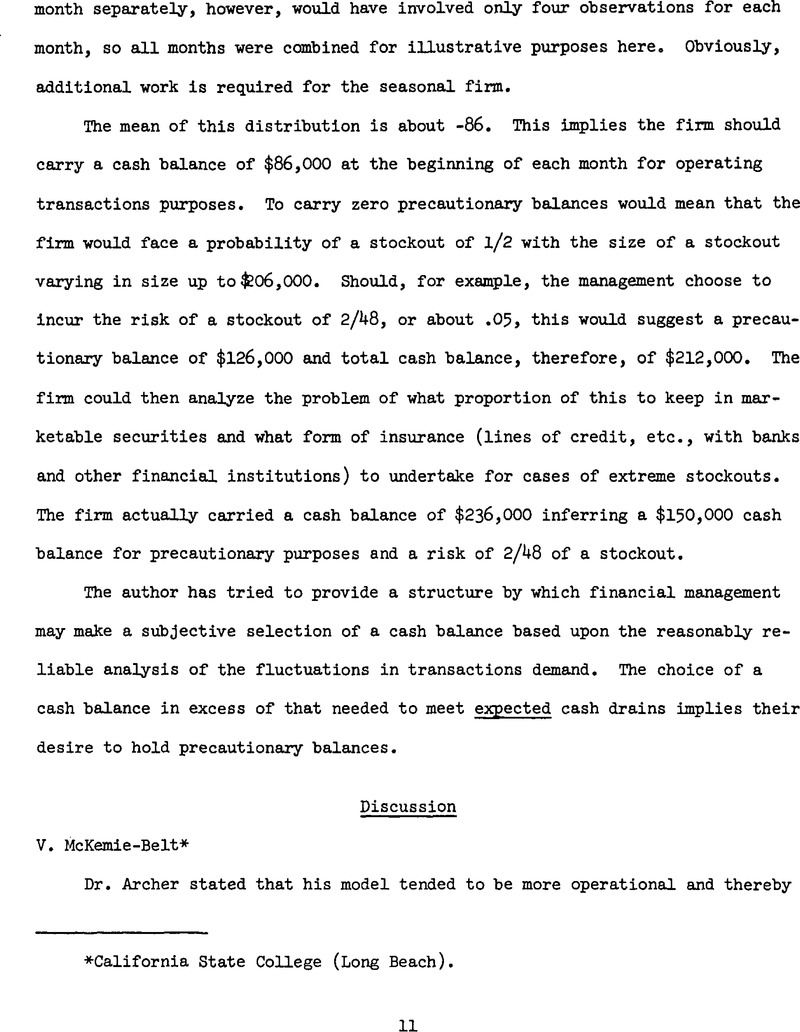Article contents
Abstract

Information
- Type
- Discussion
- Information
- Copyright
- Copyright © School of Business Administration, University of Washington 1966
References
1 Frederick A. and Vera C. Lutz, The Theory of Investment of the Firm; William J. Baumol, “The Transactions Demand for Cash”; and William Beranek, Analysis of Financial Decisions.
2 Bierman, Harold and McAdams, Alan K., Management Decisions for Cash and Marketable Securities, Cornell University, Graduate School of Business and Public Administration, 1962Google Scholar.
3 Ibid., p. 26.
4 Suggested model: Let B represent the compensating balance or minimum deposit required by individual bank policy in order for the company to maintain the proper relations and good will with its banks. Let T represent the total amount of cash required to meet the cash needs of the next immediate time period, t+1. This cash need is found by frequent and constant projections of future cash needs. Thus, the right amount of cash for 8 firm to hold at any given time period of time, C, would be the sum of B, balance required by the banks, plus Tt+1, next period's cash needs, or:
- 1
- Cited by

